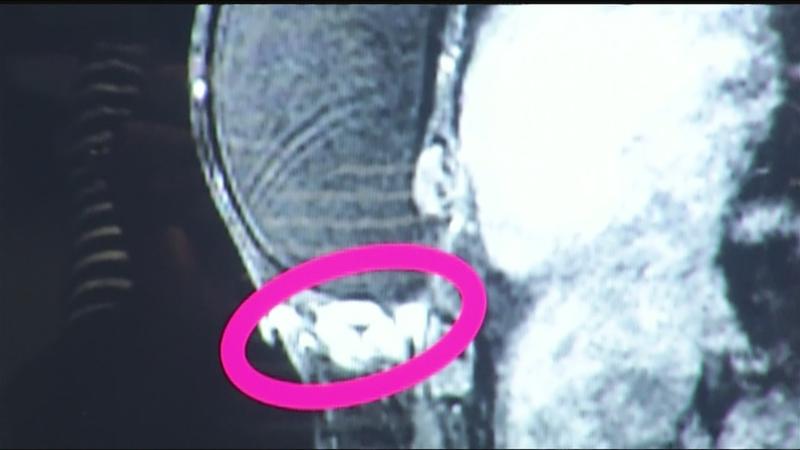Invisible on a mammogram: The breast cancer your doctor may miss
[anvplayer video=”4588668″ station=”998131″]
NEW YORK (WHEC) — In New York, mammograms are free and the state funds commercials that urge women to get screened.
That’s because mammography is the best tool available to catch most types of breast cancer early.
But while I was in Houston getting specialized radiation treatment for breast cancer, I met a patient from Pennsylvania who grew up in upstate New York.
She had mammograms annually, but doctors never detected her breast cancer.
Her story is so important, I knew I had to share it.

Elsie Spry is a smart, warm 60 year old who wears chic hats and an impish grin.
Her career as a technical writer requires her to dissect dense scientific material for publication.
And in her spare time, she loves to play the harp and piano. So she rented a harp to play during the months she stayed in Houston while being treated at the world-renown MD Anderson Cancer Center.
I sit in her living room listening as she plays.
Celestial sounds fill the high-rise apartment she has called home for months. This is Elsie Spry’s sanctuary, her place of peace during treatment for advanced breast cancer.
It was a diagnosis she never expected.
"It was just a shock because I thought I had dotted my I’s and crossed my T’s," said Elsie.
After all, Elsie had taken every precaution, and with good reason.
She was in her late 20s when her mother died of the disease. So Elsie had always been vigilant.
She had her first mammogram at the age of 31. When she was 48, she felt a change in her right breast. She felt an odd thickening and immediately alerted her doctor.
But for 12 years her doctors insisted her mammograms were normal.
What Elsie didn’t know is that mammograms often cannot see the second most common type of breast cancer – invasive lobular carcinoma.
About 85 to 90 percent of breast cancers are ductal carcinomas, like mine.
Imaging of my breast cancer shows a lump that appears bright white against the gray-colored healthy tissue around it. That’s because in ductal breast cancer, the cells form a dense lump that lights up in imaging.
But 10 to 15 percent of breast cancers are lobular cancers that don’t form a lump. Instead, the cancer cells are spread out in a single file along the tissue plane.
"So you don’t have an area of distortion," said world-renown radiologist Eric Strom of MD Anderson Cancer Center. "You don’t have a dense mass, and it can be completely invisible on a mammogram."
"This isn’t just me," said Elsie. "This is 40,000 women in the U.S. alone this year."
Elsie is correct.
The American Cancer Society estimates that 268,600 women will be diagnosed with breast cancer before the year’s end.
Of those, 10 to 15 percent will have invasive lobular carcinoma. That means 26,800 to 40,290 women will have lobular cancer even though their mammograms might appear perfectly normal.
Elsie is fighting to inform women of this fact because had she known, she would have pushed for an ultrasound or MRI, more effective tools for diagnosing lobular breast cancer.
"It really does speak to the importance of patient education," said Holly Anderson, executive director of the Breast Cancer Coalition of Rochester.
So what’s the solution?
"I honestly think knowledge about your own body and persistence in getting answers," answered Anderson.
And Dr. Strom says doctors must listen and address that persistent patient’s concerns.
"Because you’re worried about it, let’s take a sample of that and make sure. Let’s get the right imaging. But we need an answer rather than, ‘I don’t see anything,’" said Dr. Strom.
Unfortunately, Elsie’s doctors didn’t see anything as her cancer spread. She believes it’s the medical community’s responsibility to empower patients with information about lobular cancer.
"Just inform us. Then we can make our choices," she said.
Elsie is fighting to make periodic breast MRIs standard breast screening in her home state of Pennsylvania. But radiologists and cancer advocates I spoke to don’t think that’s the solution – citing the cost and high number of false positives when using MRI.
Because seven out of eight women will not get breast cancer during their lifetime, radiologists believe the number of false positives and extraordinary increase in needless biopsies that would result, make exposing the entire population to routine MRIs infeasible.
Elsie argues because mammograms often miss lobular cancer, patients aren’t diagnosed until the disease has spread. And the financial costs of treating a patient with advanced cancer can exceed a million dollars.
She believes finding lobular cancer early and treating it less expensively would result in cost savings that would outweigh the increased costs of screening.
On this, all sides agree: Patient and physician awareness is key.
Remember breast cancer isn’t always a lump. If you feel a change in your breast, talk to your doctor and keep talking until he or she listens.